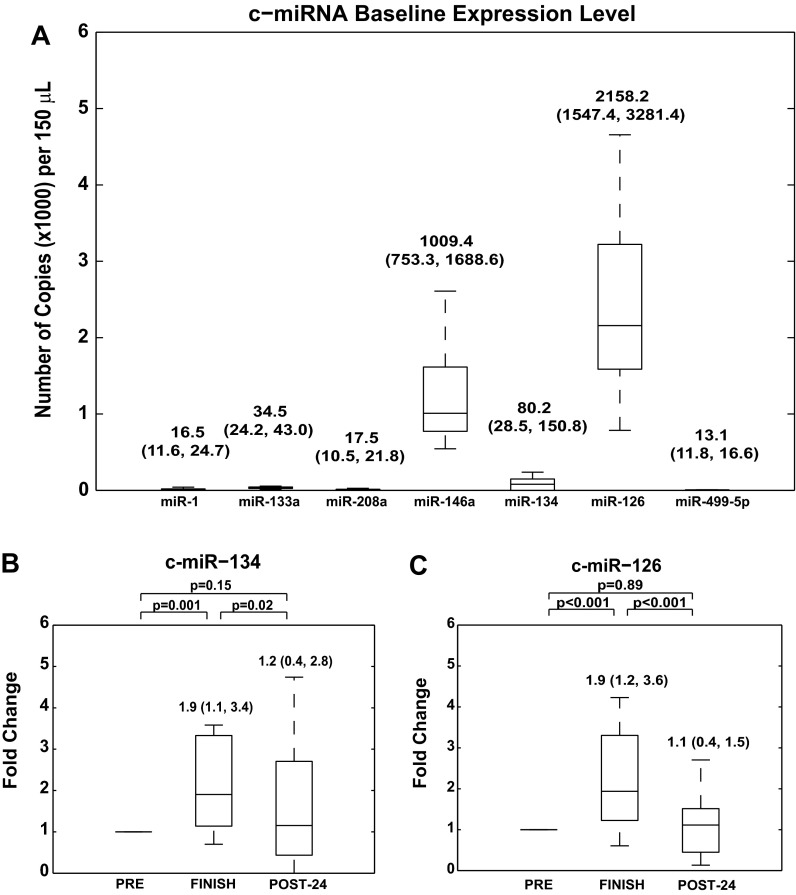Fig. 1.
Baseline characteristics of candidate circulating microRNAs (c-miRNAs). A: under resting conditions before marathon run, c-miR-1, c-miR-133a, c-miR-208a, and c-miR-134 were nearly undetectable in plasma, whereas c-miR-146a and c-miR-126 were detectable at higher relative levels. Baseline steady-state c-miRNA levels displayed a relatively modest degree of variability among the athletes. Data are presented as box and whisker plots signifying copy numbers of c-miRNA expression levels (see materials and methods), where horizontal lines denote median, boxes denote 25% and 75% percentile confidence intervals, and error bars reflect maximum and minimum values. All plots are labeled with statistical medians (1st quartile, 3rd quartile). B: modest alterations in brain-enriched c-miR-134 in the context of prolonged aerobic exercise. c-miR-134 was poorly expressed at rest, but was modestly upregulated after the end of the run with a subsequent decrease at 24 h postmarathon. C: similar to the pattern of regulation for c-miR-134, modest alterations in the endothelial-specific c-miR-126 were observed after the end of the run, followed by a decrease at 24 h postmarathon. For each marathon athlete, baseline biomarker levels under resting condition are assigned a fold change of 1, to which measurements obtained during subsequent study time points (i.e., shortly after and 24 h after prolonged aerobic exercise) are compared. Data are represented as box and whisker plots signifying fold changes in c-miRNA levels and are labeled with statistical medians, interquartile range (IQR), and P values of comparisons between conditions. PRE, the day before the marathon; FINISH, immediately after completion of the marathon; POST-24, the day following the marathon within 24 h of finishing time.

